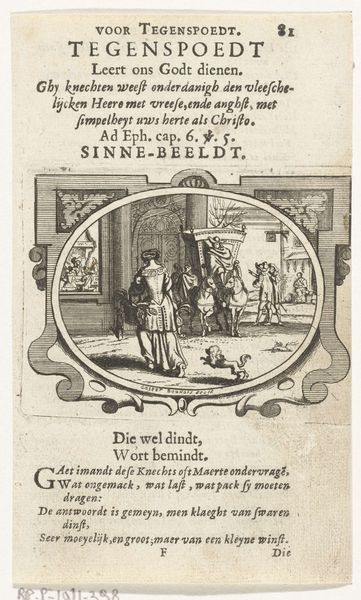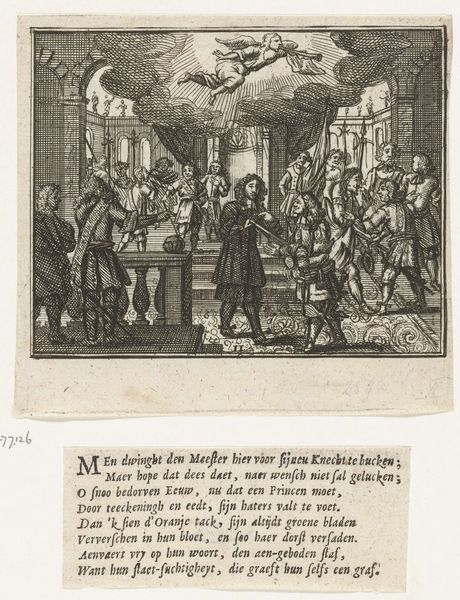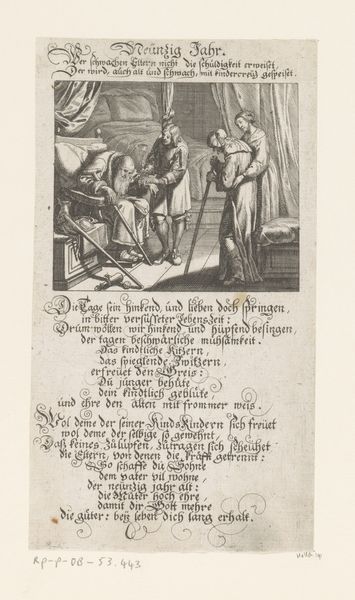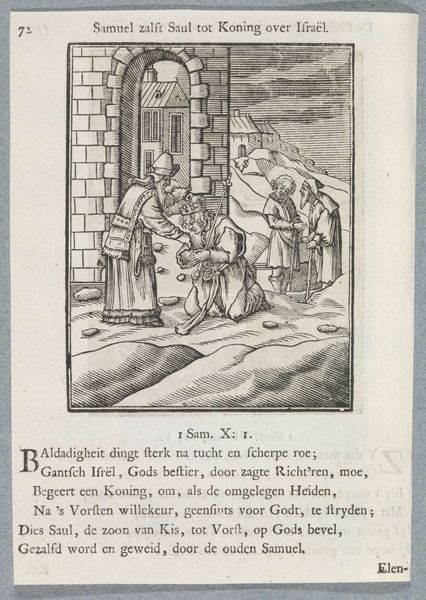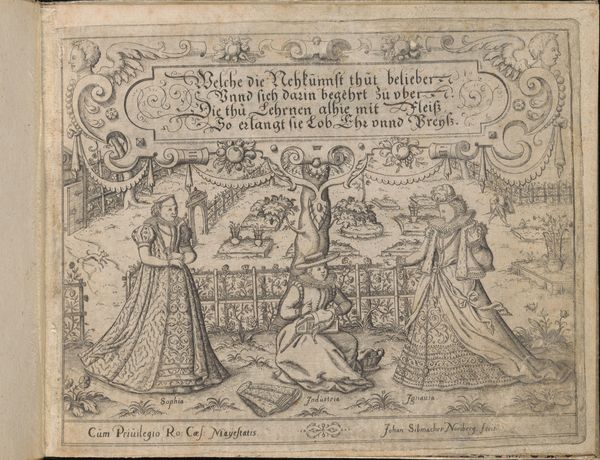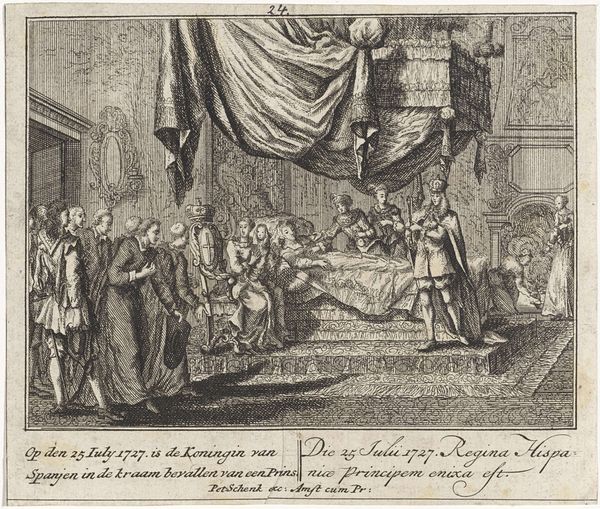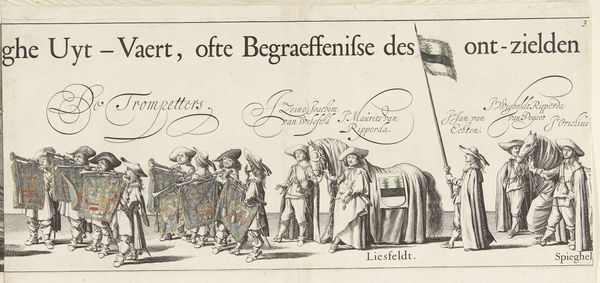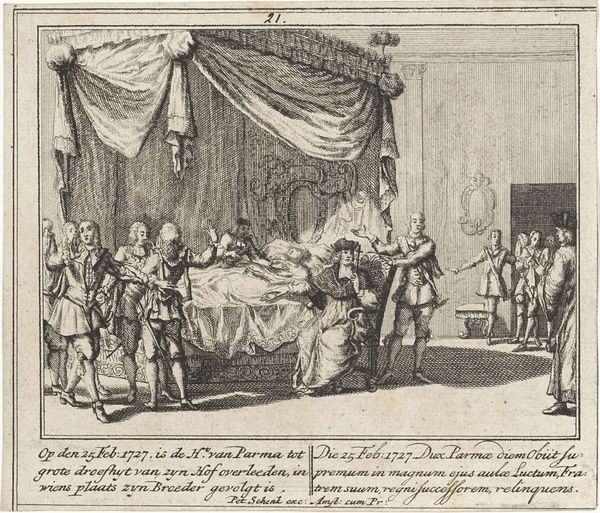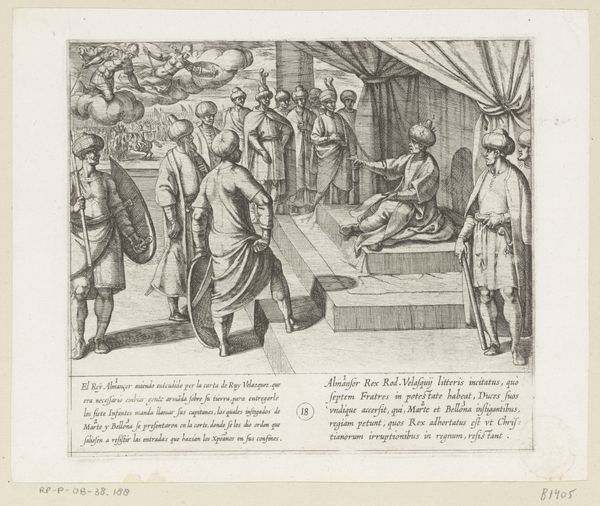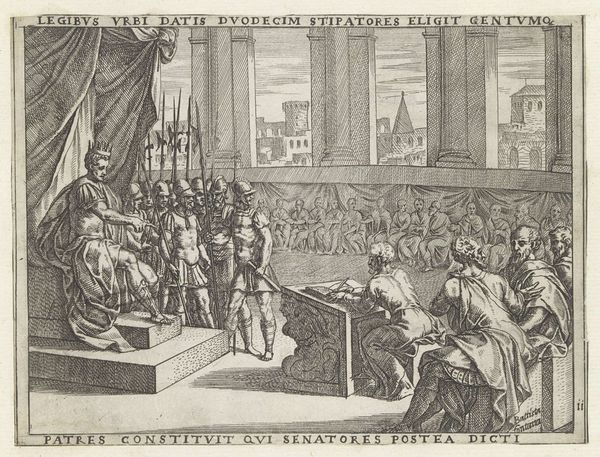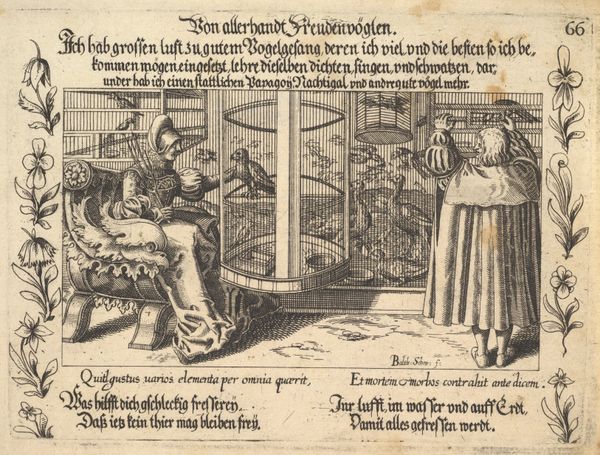
Titelvignet til "Danmarks og Hertugdømmernes Historie", 1781 1781
0:00
0:00
print, etching, engraving
#
portrait
#
medieval
#
narrative-art
# print
#
etching
#
old engraving style
#
history-painting
#
engraving
Dimensions: 124 mm (height) x 138 mm (width) (bladmaal)
Curator: Welcome. Today, we are looking at the title vignette for "Danmarks og Hertugdømmernes Historie," or "The History of Denmark and the Duchies," dating from 1781. It’s an engraving, crafted by O. J. Weyse. Editor: Immediately, I notice the rigidity in composition; everything feels so staged, so deliberately posed. The subjects are displayed, rather than interacting naturally. I also see evidence of an old engraving style which matches the 18th-century time period in which it was published. Curator: The rigid formality serves a specific purpose, I think. The engraving’s success relies on clear, easily-read symbolism within the lines of its etching. Observe how the light emphasizes the elevated status of the seated figures on the dais. Editor: Right. The power dynamic is quite evident. The figures around the central characters almost seem to melt into the background, their clothes seemingly blurring compared to the regal presentation of the King. This suggests a rigid societal hierarchy—all captured by the etching and print making processes during that era. It underscores that book printing would have been handled with similar precision in mind! Curator: Precisely. It's a visual reinforcement of historical narrative. And given its placement as a title vignette, it invites viewers to consider the construction of history itself, as a curated representation of power. The theatrical curtain on the right hints at that constructed element, literally framing the scene. Editor: What fascinates me is how the means of producing these engravings played such an important role in defining and standardizing this aesthetic across print media during that period, thus contributing to the wide circulation of this vision of Danish history. It begs questions about labour as well; how many hands touched this image before it even met its audience's gaze? Curator: Yes, you highlight the inherent complexities and collaborative nature. The formalist elements—the balance, light, and symbolic presentation— work in concert with the print’s material existence and distribution. The texture of the printed paper is critical. Editor: And in these visual relics, we gain insight into history—both material and recorded, hand in hand. Curator: Indeed, a potent image and interesting commentary about a young Kingdom finding it's national identity through historical documents and portraits.
Comments
No comments
Be the first to comment and join the conversation on the ultimate creative platform.
